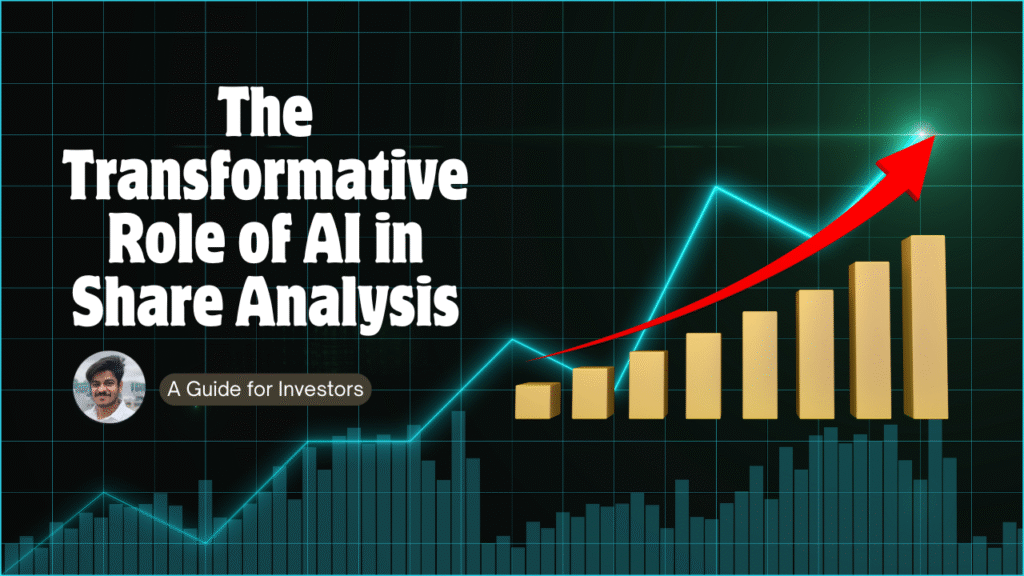
Artificial intelligence (AI) is fundamentally reshaping the landscape of financial markets. For investors, understanding how AI-powered tools enhance share analysis is crucial for staying competitive, managing risk, and identifying new opportunities. This article provides a detailed, professional overview of AI’s applications in share analysis, the benefits and limitations for investors, and best practices for integrating AI into investment strategies.
Introduction: Why AI Matters in Modern Investing
Financial markets generate vast amounts of data every second—from price movements and trading volumes to global news and social media sentiment. Traditional analysis methods struggle to process and interpret this data at scale and speed. AI, with its advanced algorithms and machine learning capabilities, enables investors to extract actionable insights from complex, high-velocity datasets, leading to more informed and timely investment decisions.
How AI Enhances Share Analysis
1. Data Processing and Pattern Recognition
- AI algorithms can analyze millions of data points in real time, identifying trends, correlations, and anomalies that may signal investment opportunities or risks.
- Machine learning models can process both structured data (financial statements, trading data) and unstructured data (news articles, earnings calls, social media), providing a holistic view of market sentiment and company performance.
2. Predictive Analytics
- AI models can forecast price movements by recognizing historical patterns and adapting to new market conditions.
- Advanced AI systems continually learn from new data, refining their predictions and helping investors anticipate market shifts.
3. Risk Management
- AI tools can stress-test portfolios against various macroeconomic scenarios, such as interest rate changes or geopolitical events.
- Automated alerts can notify investors of emerging risks, enabling proactive portfolio adjustments.
4. Sentiment Analysis
- Natural language processing (NLP) allows AI to gauge investor sentiment by analyzing news headlines, analyst reports, and social media discussions.
- This real-time sentiment analysis helps investors understand market mood and potential volatility triggers.
5. Automated Trading and Portfolio Management
- AI-driven trading systems can execute trades at optimal times, minimizing human error and emotional bias.
- Robo-advisors use AI to build and rebalance portfolios based on individual risk profiles and market conditions.
Benefits for Investors
- Speed and Efficiency: AI processes information faster than any human analyst, enabling rapid response to market developments.
- Objectivity: By relying on data-driven analysis, AI helps reduce the impact of cognitive biases in investment decisions.
- Customization: AI-powered platforms can tailor investment recommendations to individual goals, risk tolerance, and preferences.
- Scalability: AI can monitor and analyze thousands of securities simultaneously, expanding the investor’s opportunity set.
Limitations and Considerations
- Model Risk: AI algorithms are only as good as the data and assumptions they are built on. Unforeseen market events (so-called “black swans”) can challenge even the most sophisticated models.
- Transparency: Some AI systems operate as “black boxes,” making it difficult to understand how decisions are made. Investors should seek platforms that offer explainable AI and clear methodologies.
- Cost: Advanced AI tools may come with significant subscription or implementation fees. A cost-benefit analysis is essential before adoption.
Best Practices for Investors Integrating AI
- Start with Education: Understand the basics of AI and its applications in finance. Leverage reputable industry reports and academic research for foundational knowledge.
- Select the Right Tools: Choose AI platforms that match your investment style and risk tolerance. Prioritize those with transparent methodologies and robust risk controls.
- Combine Human Judgment with AI Insights: Use AI-generated analysis as a supplement to, not a replacement for, your own research and professional advice.
- Monitor and Review: Regularly assess the performance of AI-driven strategies and remain vigilant to market changes that may affect model accuracy.
- Stay Informed: Follow industry developments, regulatory updates, and advances in AI technology to ensure your approach remains current and effective.
Conclusion: AI as a Strategic Investment Partner
Artificial intelligence is not a replacement for investor expertise but a powerful partner in the investment process. By leveraging AI for share analysis, investors can enhance their ability to identify opportunities, manage risks, and achieve their financial objectives. The key is to approach AI adoption thoughtfully—combining technological innovation with sound investment principles and continuous learning.